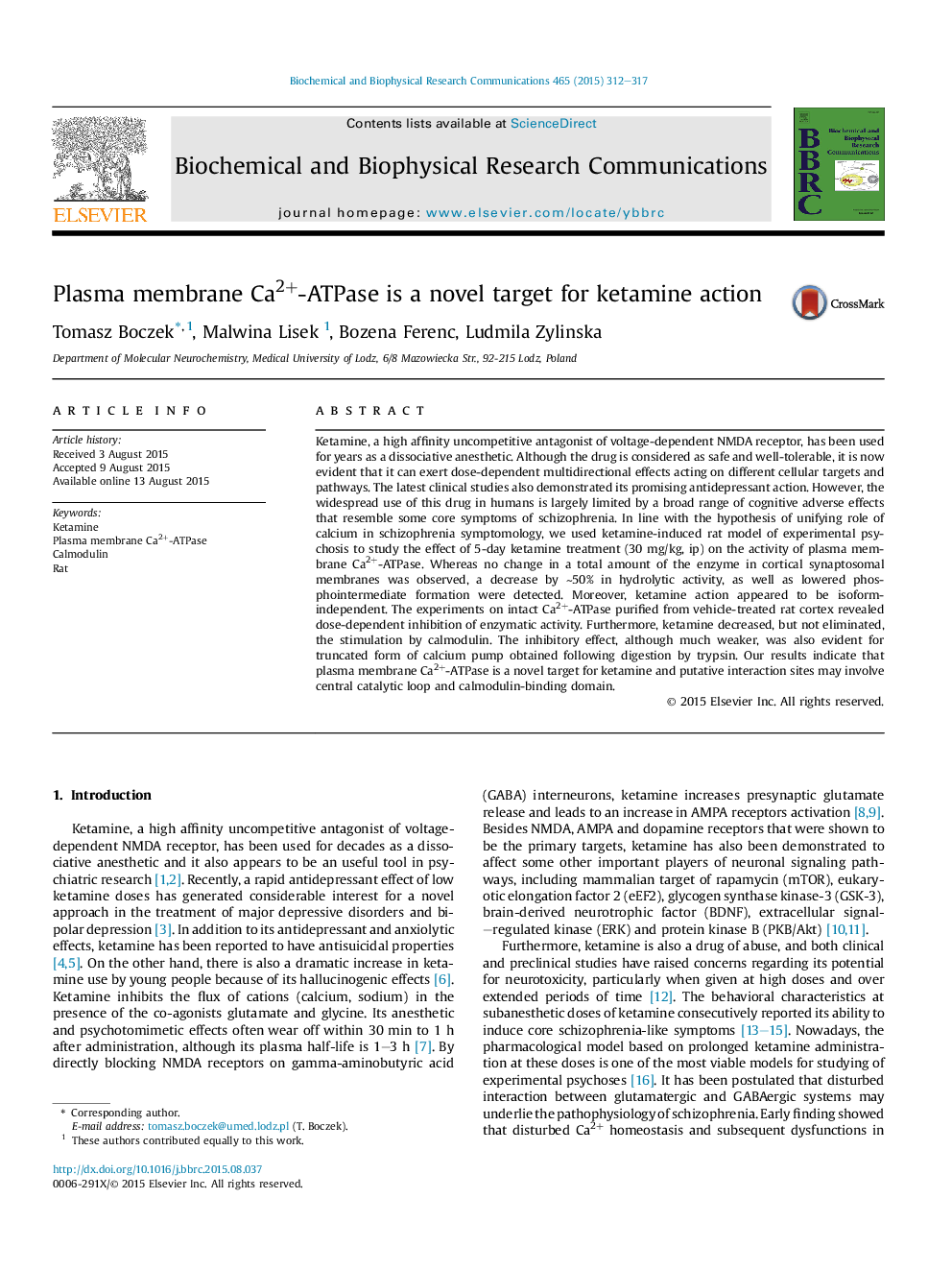| Article ID | Journal | Published Year | Pages | File Type |
|---|---|---|---|---|
| 1928026 | Biochemical and Biophysical Research Communications | 2015 | 6 Pages |
Abstract
Ketamine, a high affinity uncompetitive antagonist of voltage-dependent NMDA receptor, has been used for years as a dissociative anesthetic. Although the drug is considered as safe and well-tolerable, it is now evident that it can exert dose-dependent multidirectional effects acting on different cellular targets and pathways. The latest clinical studies also demonstrated its promising antidepressant action. However, the widespread use of this drug in humans is largely limited by a broad range of cognitive adverse effects that resemble some core symptoms of schizophrenia. In line with the hypothesis of unifying role of calcium in schizophrenia symptomology, we used ketamine-induced rat model of experimental psychosis to study the effect of 5-day ketamine treatment (30Â mg/kg, ip) on the activity of plasma membrane Ca2+-ATPase. Whereas no change in a total amount of the enzyme in cortical synaptosomal membranes was observed, a decrease by â¼50% in hydrolytic activity, as well as lowered phosphointermediate formation were detected. Moreover, ketamine action appeared to be isoform-independent. The experiments on intact Ca2+-ATPase purified from vehicle-treated rat cortex revealed dose-dependent inhibition of enzymatic activity. Furthermore, ketamine decreased, but not eliminated, the stimulation by calmodulin. The inhibitory effect, although much weaker, was also evident for truncated form of calcium pump obtained following digestion by trypsin. Our results indicate that plasma membrane Ca2+-ATPase is a novel target for ketamine and putative interaction sites may involve central catalytic loop and calmodulin-binding domain.
Related Topics
Life Sciences
Biochemistry, Genetics and Molecular Biology
Biochemistry
Authors
Tomasz Boczek, Malwina Lisek, Bozena Ferenc, Ludmila Zylinska,
